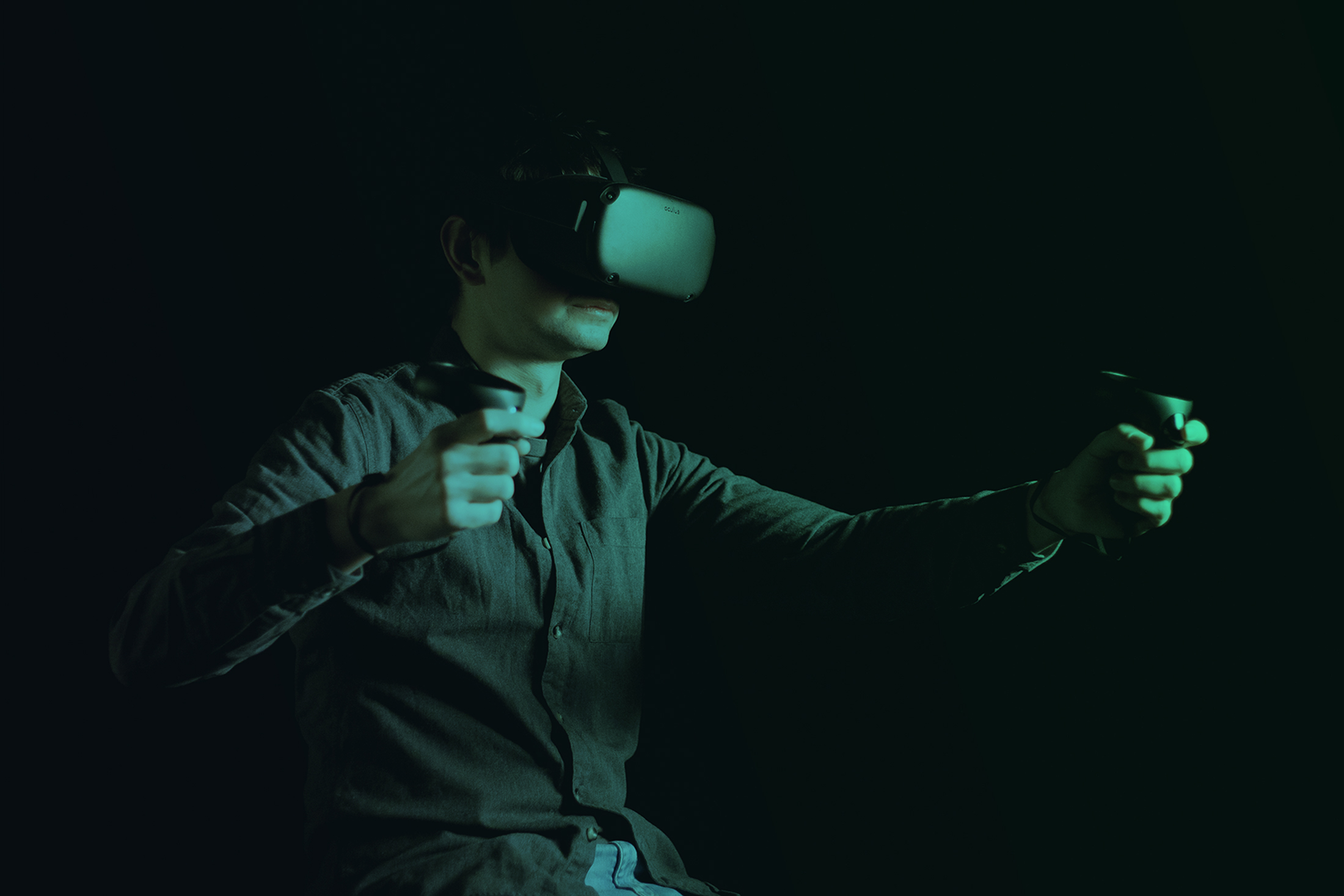Publications
The library contains publications providing information on recent and emerging virtual reality technologies and their application in rehabilitation. Details can be found on authors, research, technology, area of impact as well as location.
VR4REHAB is providing this library as a service for all stakeholders in rehabilitation to showcase past, current and future work with neither assessment of quality of content nor evaluation of claims made by the original authors. Therefore, reference to any work or products in the library does not constitute an endorsement or recommendation by VR4REHAB.
"Here, we present a series of case studies (two upper and two lower limb amputees) on the use of PME as a self-treatment. We explore the benefits and the challenges encountered in translation from clinic to home use with a holistic, mixed-methods approach, employing both quantitative and qualitative methods from engineering, medical anthropology, and user interface design."
Providing a suitable rehabilitation at home after an acute episode or a chronic disease is a major issue as it helps people to live independently and enhance their quality of life. However, as the rehabilitation period usually lasts some months, the continuity of care is often interrupted in the transition from the hospital to the home.
"There is still limited evidence supporting the use of VR and AR technology during locomotion, especially regarding the safety and efficacy relating to walking biomechanics. The objective of this study is to explore the limitations of such technology through gait analysis."
"In this study, we explore the potential of AR for evaluating 1) speed and goal-directedness of movements within the individually determined interaction space, 2) adaptation of hand opening to objects of different sizes, and 3) obstacle avoidance in healthy individuals (N = 10) and two highly prevalent neurological conditions (N = 10 patients with Parkinson’s Disease and N = 10 stroke patients)."
"In this study we propose and evaluate a wearable visual feedback system for gait retraining of the foot progression angle (FPA)."
"The objective of this study is to assess whether augmented reality (AR) visual cues improve FOG and turning in place in PD patients with FOG."
"We realize highly compliant magnetosensitive skins with directional perception that enable magnetic cognition, body position tracking, and touchless object manipulation. Transfer printing of eight high-performance spin valve sensors arranged into two Wheatstone bridges onto 1.7-μm-thick polyimide foils ensures mechanical imperceptibility."
"In this study, the effect of different visual inputs on stability and complexity of postural control was examined by analyzing the mean velocity (MV), SD, and fuzzy approximate entropy (fApEn) of the center of pressure (COP) signal during quiet upright standing."
"The aim of this review is to provide a summary of paediatric pain features, along with their physiology, assessment, management, and to highlight the importance and efficacy of nonpharmacological pain management in an urgent paediatric care setting."
"This paper explores the feasibility of using touchless textile sensors as an input to environmental control for individuals with upper-extremity mobility impairments."
"The aim of this study is to determine if there is a correlation between a risk of falls, gender, and a risk of falls and the age of the subjects. Another reason to conduct that research was to assess the effectiveness of Frankel’s exercises and training of using the stabilometric platform in rehabilitation, which aims to reduce the risk of falls among elderly people."
"The primary aim of the Information and Communications Technology-based System to Predict and Prevent Falls (iStoppFalls) project was to develop innovative home-based technologies for continuous monitoring and exercise-based prevention of falls in community-dwelling older people."
"The aim of this study was to determine whether computer-aided training (CAT) of motor tasks would increase muscle activity and change its spatial distribution in a patient with a bilateral upper-limb congenital transverse deficiency."
"We evaluate the effects of exergaming on CV‐related risk factors compared with traditional aerobic exercise in high CV risk patients."
"This study aimed at investigating the benefits of combined training on global cognition while assessing the effect of training dosage and exploring the role of several potential effect modifiers."
"By adopting an evidence-based approach to VR simulation design and testing it is possible to develop valid environments that allow the potential of VR training to be maximized."
"This study aims to evaluate how patients with dementia interact and accept 5 out-of-the-shelf technologies while completing 10 virtual reality tasks."
"This study aimed to present a brief review of a ADHD-VR digital game diagnostic tool prototype with a DL model for children and the proposed four-step method for its development."
